Men we Love: Photog Chris Noble on Women Who Dare
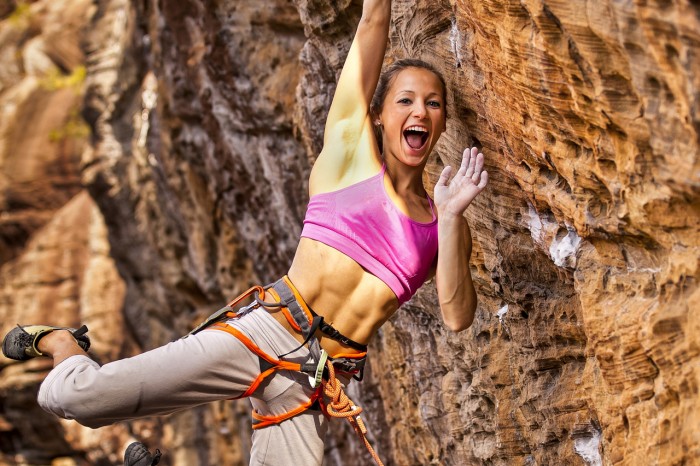
Chris Noble has a passion for photographing women. Female rock climbers, in particular. Which is exactly why he curated a stunning selection of his own female-focused photography and published the book Women Who Dare: North America’s Most Inspiring Women Climbers, a gorgeous photo journal of the world’s best female rock climbers. Here, we check in with Noble to learn more about the book’s white-knuckle moments and its blow-your-socks off moments, plus the things that surprise him most about women climbers.
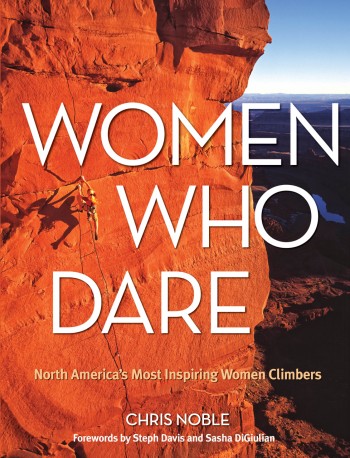
WomensMovement: What inspired you to produce this book focused on female climbers?
Chris Noble: A number of years ago I took time to reflect back on my career and I noticed that many of my favorite photographs featured women in relationship with nature. I started pursuing a book-length project that would explore that relationship in greater depth. Eventually the focus narrowed to women and climbing, and Women Who Dare was born.
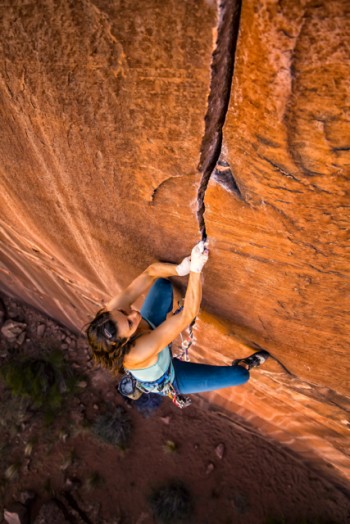
Pro climber Steph Davis climbing “Hidden Gem” rated 5.13, near Moab Utah. Photo: Chris Noble
WM: What surprises you most about female climbers?
Chris: What surprises me most about women climbers is how open and willing they are to learn. That’s very challenging for men. Years ago, I was in Yosemite with Lynn Hill a year after she had free climbed the Nose in a day. It was the first time I’d worked with her, and I was blown away by several qualities. The first was how thoughtful she was. Most climbers I know simply jump on a route and go for it. But Lynn took the time to study, analyze, and learn everything she could before starting.
And the second thing that surprised me was she was completely open to suggestions. One afternoon we were in Camp 4 and she decided to try the famous boulder problem Midnight Lightning. She’s climbed that problem repeatedly since, but I believe that day was one of her first attempts. Here she was, one of the most famous, accomplished, rock climbers in the world, at the very zenith of her career, and she was wasn’t afraid to try and fail in front of the crowd that gathered to watch, nor to listen to suggestions from climbers with a tenth her talent and experience. Lynn embodies the approach I noticed in all the climbers profiled in the book. Unlike most men, women are not afraid to fail, and they are more concerned with learning and improving than protecting their self-image. That’s a precious and powerful secret weapon!
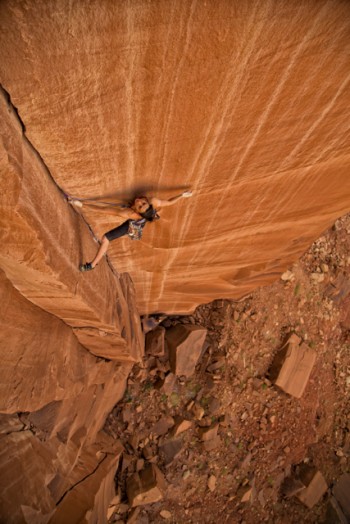
Pro climber Steph Davis climbing “Glad To Be A Trad” rated 5.13 in Southern Utah. Photo: Chris Noble
WM: What was the most white-knuckle moment you experienced while shooting these women for your book?
Chris: Normally when you climb a big wall you start at the bottom, and as you slowly ascend you have the opportunity to get used to the ever-increasing exposure of being higher and higher off the ground.
But when you shoot a climb you often start at the top of the wall and rappel down, and no matter how many times you’ve done it, the full impact of the height and distance hits you right in the gut. Climbers call this the Pucker Factor. It’s actually a trick of the mind because whether you are a single rope length off the deck, or twenty, if you screw up, the results are the same. But when you rap off the North Rim of the Black Canyon of the Gunnison, like we did to photograph big wall experts Madaleine Sorkin and Kate Rutherford for Women Who Dare, the fifteen hundred feet of exposure has a tendency to make you much more fearful about everything that might go wrong, such as the rope rubbing on sharp edges, rock fall, or losing control of the rappel.
The Black also has a well deserved reputation for the serious and committing nature of it’s climbing. At one point the perfect position to photograph Kate leading a pitch was directly below a huge hanging pile of loose rock! I desperately wanted to clip into something to hold me in the proper position, and at the same time I had the feeling that if I touched or pulled on anything at all, several tons of choss might collapse on top of me. I’m pretty sure I had white knuckles while trying to figure out how to deal with that.
WM: What was the most knock-your-socks-off, amazing moment?
Chris: There were so many, but one thing that stands out was the first day I worked with Sasha DiGiulian in Kentucky’s Red River Gorge. At the time, Sasha was still in high school. She was so young and such a city girl! Dressed in knee high hot pink Moon Boots with a purse to match, she could have been any high school senior. But once she started climbing I realized I was in the presence of a truly remarkable world class talent. Sasha might have grown up in Washington, DC, and she might call Manhattan her favorite place to live, but she was born and bred to climb at a phenomenal level.
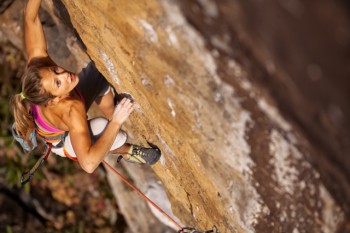
Sasha DiGiulian climbing “True Love” 13d at “The Gold Coast,” Pendergrass Murray Recreational Preserve, Red River Gorge, Kentucky, USA. Photo: Chris Noble
WM: From your perspective, where are women headed today in the sport of rock climbing?
Chris: I feel that women today are headed toward full integration into the sport. In fact, I think Women Who Dare is an acknowledgement that they’ve already arrived. In the future it won’t be necessary to do a book on women climbers because I believe there will be less and less interest about whether a climb was done by a man or a woman. Just as individuals have different strengths and weaknesses, so do climbers of each gender. Generally, women tend to be better at technical climbing with tiny holds, where men might be better at dynamic movement up steep terrain. As Steph Davis points out in the book’s foreword, she considers herself a climber first and foremost, sure she’s female, but that distinction falls well down the list of how she defines herself.
WM: What camera did you shoot the book with?
Chris: The book was primarily photographed with a Canon 5D Mark III. In my opinion, the perfect tool for this project.
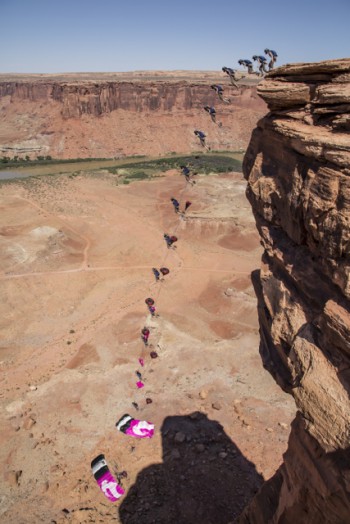
A composite image of Steph Davis Base jumping from a cliff above the Green River in Southern Utah. Photo: Chris Noble
Kamagra oral jelly Online something to buy the most convenient way. He doesn’t demand from you any actions except how to visit the website. And in separate with goods necessary to you to put the end. To specify your address and to wait for the supplier to whom you will give money.


LET'S GET SOCIAL